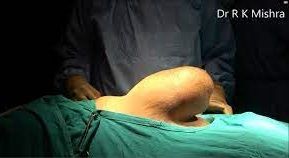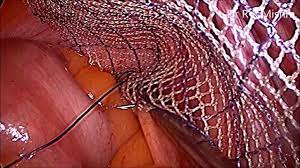Robotic Donor Hepatectomy: Donor Liver Transplantation
Add to
Share
108 views
Report
1 month ago
Description
Robotic Donor Hepatectomy: Pioneering the Future of Living Donor Liver Transplantation – Key Insights from WALS 2025 Introduction The field of liver transplantation has witnessed significant advancements in recent years, with robotic donor hepatectomy emerging as a transformative innovation. At the World Association of Laparoscopic Surgeons (WALS) 2025 conference, leading experts convened to discuss the latest developments, benefits, challenges, and future prospects of robotic donor hepatectomy in living donor liver transplantation (LDLT). This groundbreaking approach is revolutionizing the safety, precision, and feasibility of organ donation while improving outcomes for both donors and recipients. Understanding Robotic Donor Hepatectomy Robotic donor hepatectomy involves the use of robotic-assisted surgical systems to perform the liver donation procedure with enhanced precision and minimal invasiveness. Unlike conventional open or laparoscopic techniques, robotic systems provide three-dimensional visualization, tremor filtration, and improved dexterity, allowing surgeons to navigate complex anatomical structures with greater control. The primary goal of robotic donor hepatectomy is to ensure the safety of the donor while optimizing graft quality for the recipient. Given the complexities associated with living donor liver transplantation, robotic technology has the potential to overcome traditional surgical limitations and pave the way for wider adoption of minimally invasive approaches in hepatobiliary surgery. Key Insights from WALS 2025 1. Enhanced Precision and Safety Speakers at WALS 2025 highlighted how robotic technology significantly enhances surgical precision. The improved visualization and maneuverability allow for meticulous dissection of the liver parenchyma and vasculature, reducing the risk of complications such as bleeding and bile leaks. This level of precision translates to better postoperative recovery for the donor and improved graft viability for the recipient. 2. Minimally Invasive Approach with Faster Recovery One of the most significant advantages of robotic donor hepatectomy is its minimally invasive nature. Unlike traditional open surgery, which involves a large incision and longer recovery times, robotic surgery utilizes small keyhole incisions. This reduces postoperative pain, minimizes blood loss, and leads to faster recovery and shorter hospital stays for donors. Patients undergoing robotic donor hepatectomy often experience less scarring and a quicker return to normal activities. 3. Reduction in Surgical Morbidity The risk of surgical complications is a major concern in living donor surgeries. Robotic donor hepatectomy, as discussed at WALS 2025, has been associated with lower rates of surgical morbidity, including fewer wound infections and reduced incidence of hernias. This improvement in donor safety could encourage more individuals to consider liver donation, thereby addressing the global organ shortage crisis. 4. Technical Challenges and Learning Curve While robotic technology offers numerous advantages, WALS 2025 panelists acknowledged the challenges associated with its widespread adoption. The learning curve for robotic donor hepatectomy remains steep, requiring specialized training and extensive experience in hepatobiliary surgery. Additionally, the cost of robotic systems and the need for institutional infrastructure pose barriers to accessibility in certain regions. 5. Future Prospects and Global Adoption The future of robotic donor hepatectomy is promising, with ongoing research focusing on refining techniques and expanding accessibility. Experts at WALS 2025 emphasized the importance of training programs and collaborative efforts to standardize protocols worldwide. As more transplant centers integrate robotic technology into their surgical programs, the potential for improving donor safety and transplant success rates will continue to grow. Conclusion Robotic donor hepatectomy is at the forefront of innovation in living donor liver transplantation. Insights from WALS 2025 underscore its role in enhancing surgical precision, reducing morbidity, and improving donor experiences. While challenges such as training requirements and costs remain, the continued advancement of robotic-assisted surgery holds immense promise for the future of organ transplantation. As technology evolves and adoption increases, robotic donor hepatectomy is poised to redefine the landscape of liver transplantation, offering hope to patients in need of life-saving interventions.
Similar Videos






